The Prospect of Clean Energy Production from Fusion
A Peak Behind the Curtain
Andrew Franklin
Introduction
VERBAL DISCLAIMER
"There's no miracle people. It just happens that they got interested in this thing and they learned all this stuff."
- Richard Feynman
Talk Outline
- Essential nuclear physics
- Fusion fundamentals
- Incomplete overview of current approaches
- A taste of the technical challenges
- Survey from 1,000 feet
- Example of a tokamak design
- Resource Dump
Essential Nuclear Physics
Unit of Energy
- Electron Volt ($eV$): the amount of energy gained by as single electron through a potential difference of 1 $V$ in an electric field.
\begin{equation} 1 ev = 1.6 \times 10^{-19} J \end{equation}
- An electron with 1 $eV$ of kinetic energy has a speed of about $5.93 \times 10^5 \: m / s$ (1,326,503 $mph$)
- $c \approx 3 \times 10^8 m/s$
Energy/Temperature Conversion
- Energy units are sometimes used to express the temperature of a fluid.
- $E(eV) = T(K) \left( \frac{1 \: eV}{11,600 \: K} \right)$
- Example, a room temperature fluid ($20 \: ^o C$ = $293.15 \: K$) has an energy of $0.0253 \: eV$
Unit of Mass
- The atomic mass unit ($amu)$ is defined to be exactly 1/12 the mass of a neutral $^{12}C$ atom.
- $1 \: amu = 1.6605402 \times 10^{-27} \: kg$
- $m_e \approx 5.496 \times 10^{-4} \: amu$
- $m_n \approx 1.007 \: amu$
- $m_p \approx 1.009 \: amu$
Einstein's Famous Equation
For bevity, let's skip all of special relativity...
- $E = m c^2$
where $c^2 = 931.5 \frac{MeV}{amu}$.
Nucleus Mass Defect
$Z m_p + Z m_e + N m_n > m_{^A_ZX^N}$
where did the mass go?
Binding Energy
$BE = c^2 \left( Z m_p + Z m_e + N m_n - m_{^A_ZX^N} \right)$
The amount of energy that would need to be absorbed to dismantle the nucleus. $\frac{BE}{A}$ is a stability index with stability associated with high values.
Stability Curve
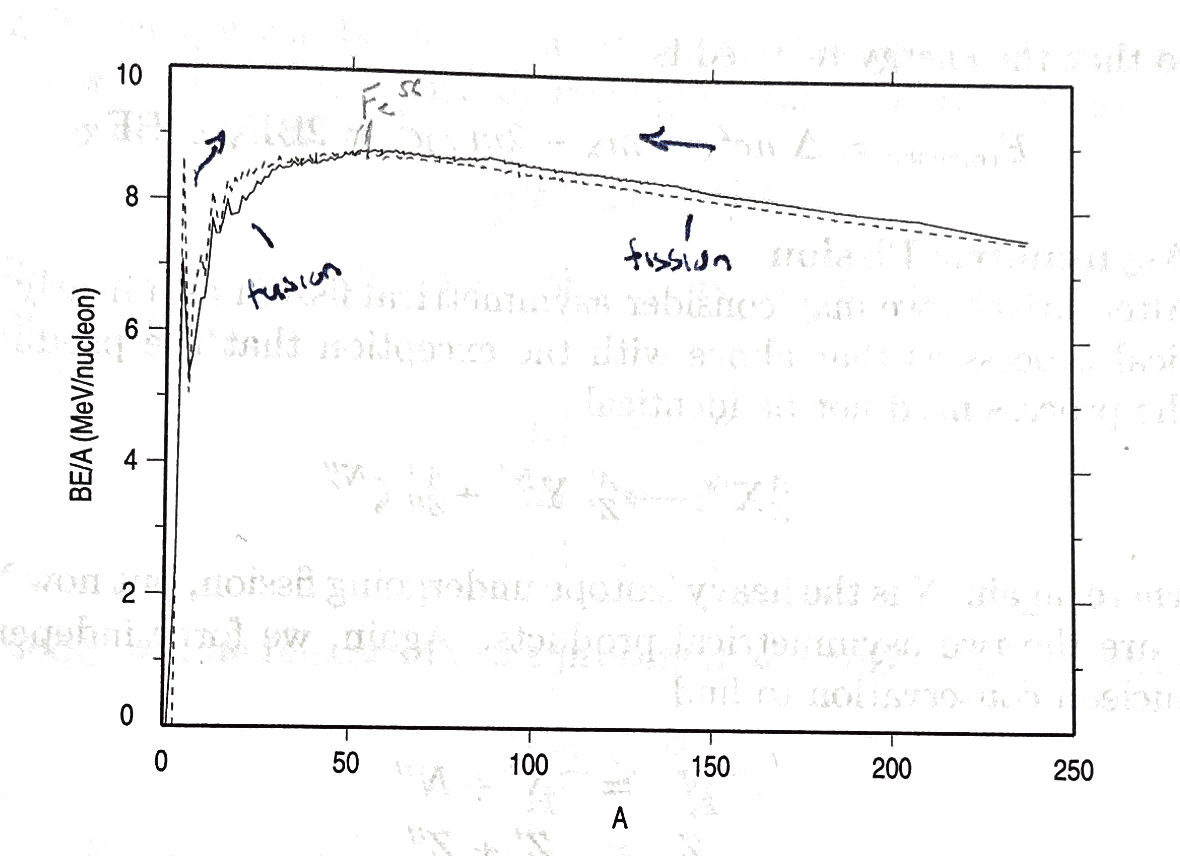
Nuclear Reactions
An example of the notation for generic binary reactions
\begin{equation} x + X \rightarrow Y + y \end{equation}
or the more terse notation
\begin{equation} X(x,y)Y \end{equation}
Coulomb Barrier
\begin{equation} E_\text{repulsion} \propto \frac{e^Z}{R} \end{equation}
where $e$ is the electic charge, $R$ is the distance between the charges, $E$ is the amount of energy to bring $Z$ protons together. $R$ is on the order of $10^{-12} \: cm$.
Cross Sections

\begin{equation} \sigma \equiv \lim_{\Delta x \rightarrow 0} \frac{R}{n_b v_b N A \Delta x} \end{equation}
$\sigma$ is the microscopic cross section with units of barns ($b$). $1 \: b = 10^{-24} cm^2$.
Some Important Nuclear Reactions

Stuff not covered
- Energy distribution amoungst constituents (consequence of conservation of momentum)
- Neutron flux
- Reaction rates
- Radioactivity
- etc.
Fusion Fundamentals
Important Fusion Reactions

Probably the most interesting one for this conversation \begin{equation} D + T \rightarrow \: ^4He + n \end{equation} This reaction has a Q value of 17.59 MeV. The neutron has 14.05 MeV of kinetic energy! The Heluim has 3.54 MeV.
More on these fusion Reactions
- The $^6Li$ and $^{11}B$ reactions are classifies as "aneutronic"
- aneutronic reactions eliminate the inventory associated with neutron activation (i.e. radioactive waste)
- aneutronic fuels are an advanced fuel because they have a lower cross section for fusion that $D$-$D$ or $D$-$T$ reactions
- Tritium has a half-life of 12.3 years. It must be breed.
Back to the Coulombic Barrier
- $D$-$T$ reaction (2 protons) is repelled by a potential of 444 keV
- $D$-$^3He$ (3 protons) is repelled by a potential of 1 MeV!
- Despite the high barrier energy, tunneling allows a non-zero cross section at energies below that
- $D$-$T$ at 10 keV (cold tritium plasma) has a fusion cross section of about 2 mb
- $n$-$^{235}U$ at thermal energies (0.0253 eV) has a fission cross section of 585.1 b
Plasma Confinement
- Gravitational (e.g. stars)
- Magnetic (e.g. Tokamaks)
- Inertial Confinement (e.g. LLNL - NIF)
Incomplete overview of current approaches
Inertial Confinement
- National Ignition Facility
- First breakeven shot
- 1% thermal efficiency
- Lasers are very inefficient by modern standards
- Machining tolerances on the pellet are extremely tight
- LIFE
- 10 shots / sec
- Manufacturing on mass scale to the fine tolerances is not there, yet
- Still produces waste from the 14.1 MeV neutrons
- Machining tolerances on the pellet are extremely tight
Tokamaks
- ITER
- International mega-project
- Not expected to reach break even, but should provide valuable knowledge towards commercialization
- Machining tolerances on the pellet are extremely tight
- Commonwealth Fusion Systems
- Much smaller in scale
- Leaveraging advances in superconducting ceramics to generate a strong magnetic field
Other Startups
- General Fusion
- HB11
- Helion
- Zap
A taste of the technical challenges
Part 1
Extended Bateman Equation
\begin{equation} \frac{d\vec{N}(t)}{dt} = A \vec{N}(t) \end{equation}
- Potentially Stiff
- Can be solved using backward euler, best rational approximation, or matrix exponentials
Problem Prompt
- $FLiBe$ blanket surrounding a thermonuclear reactor
- Total neutron flux of $10^{14} \: n/cm^2 \cdot s$
- Assume 50% of the neutrons are 14.1 $MeV$ and the other half is 2.45 $MeV$
- How long will it take for the blanket to be as radioactive as a Brazil nut?
Problem Prompt
- $FLiBe$ blanket surrounding a thermonuclear reactor
- Total neutron flux of $10^{14} \: n/cm^2 \cdot s$
- Assume 50% of the neutrons are 14.1 $MeV$ and the other half is 2.45 $MeV$
- How long will it take for the blanket to be as radioactive as a Brazil nut?
Simplified $^{238}U$ Decay Chain

$^{6}Li$ and $^{7}Li$ Activation/Decay Chain
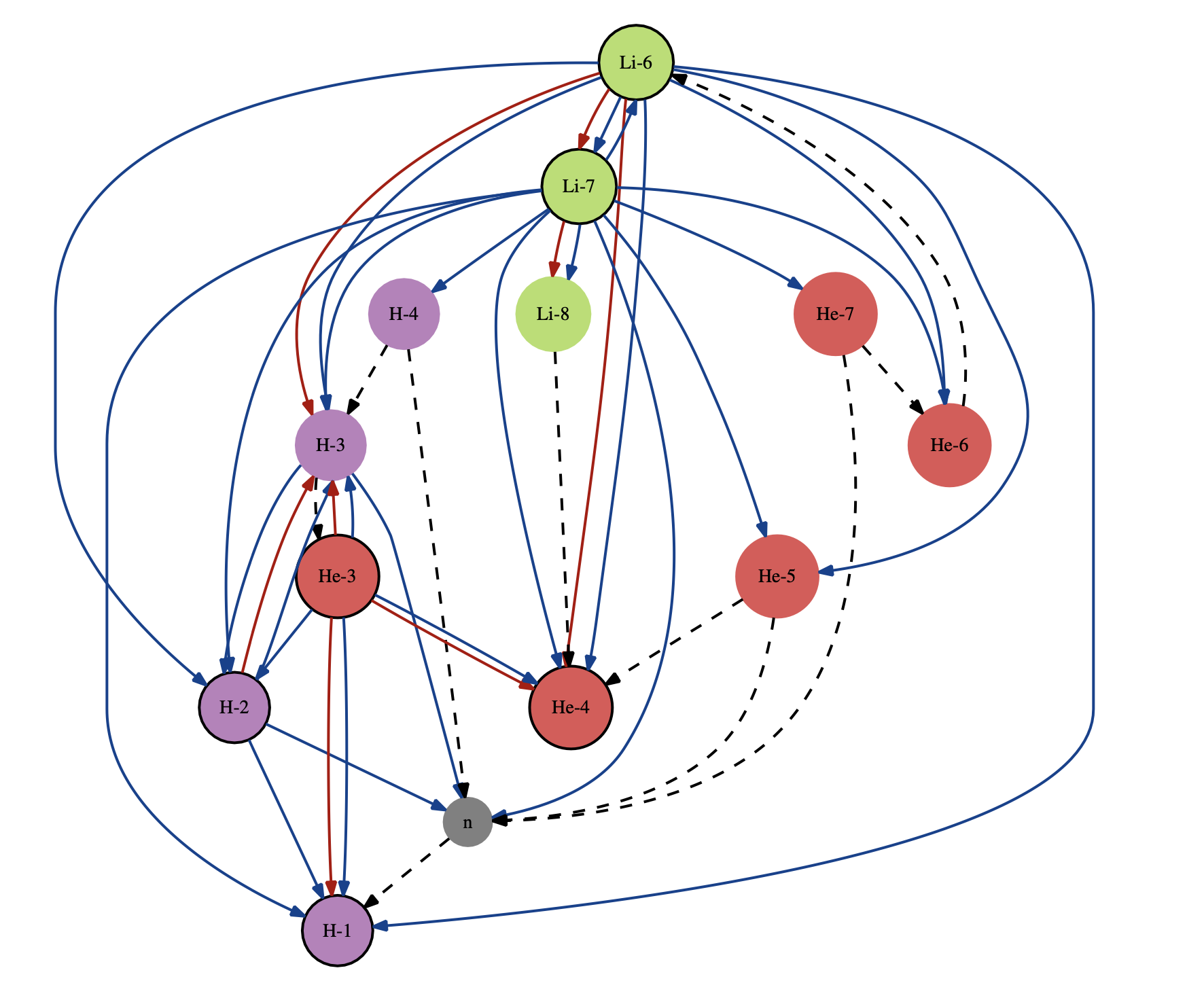
Side Note
- Dashed arrows: decays
- Red arrows: neutron interactions with 2.45 MeV neutrons
- Blue arrows: neutron interactions with 14.1 MeV neutrons
$^{9}Be$ Activation/Decay Chain
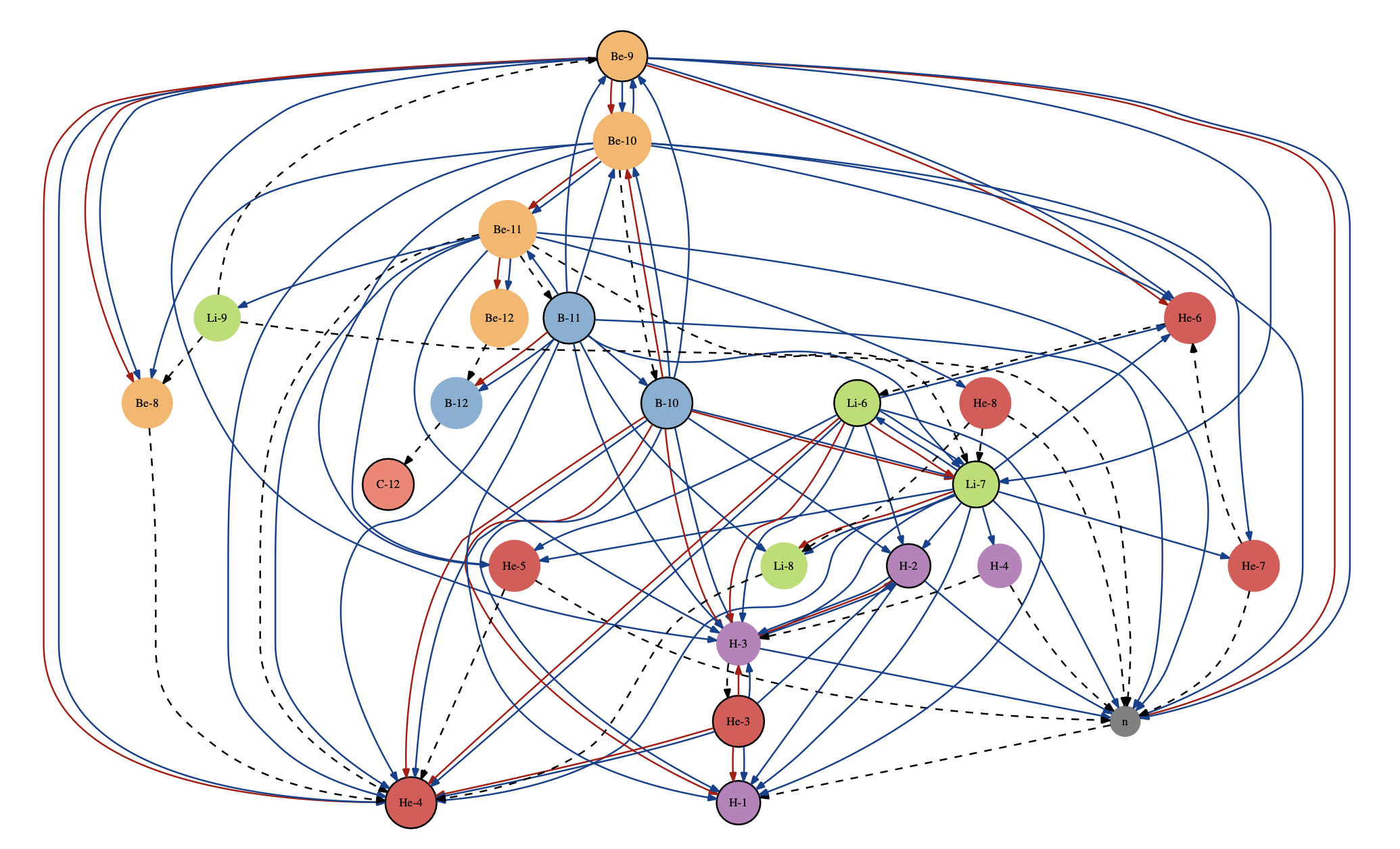
$^{19}F$ Activation/Decay Chain

Simplified $FLiBe$ Activation/Decay Chain
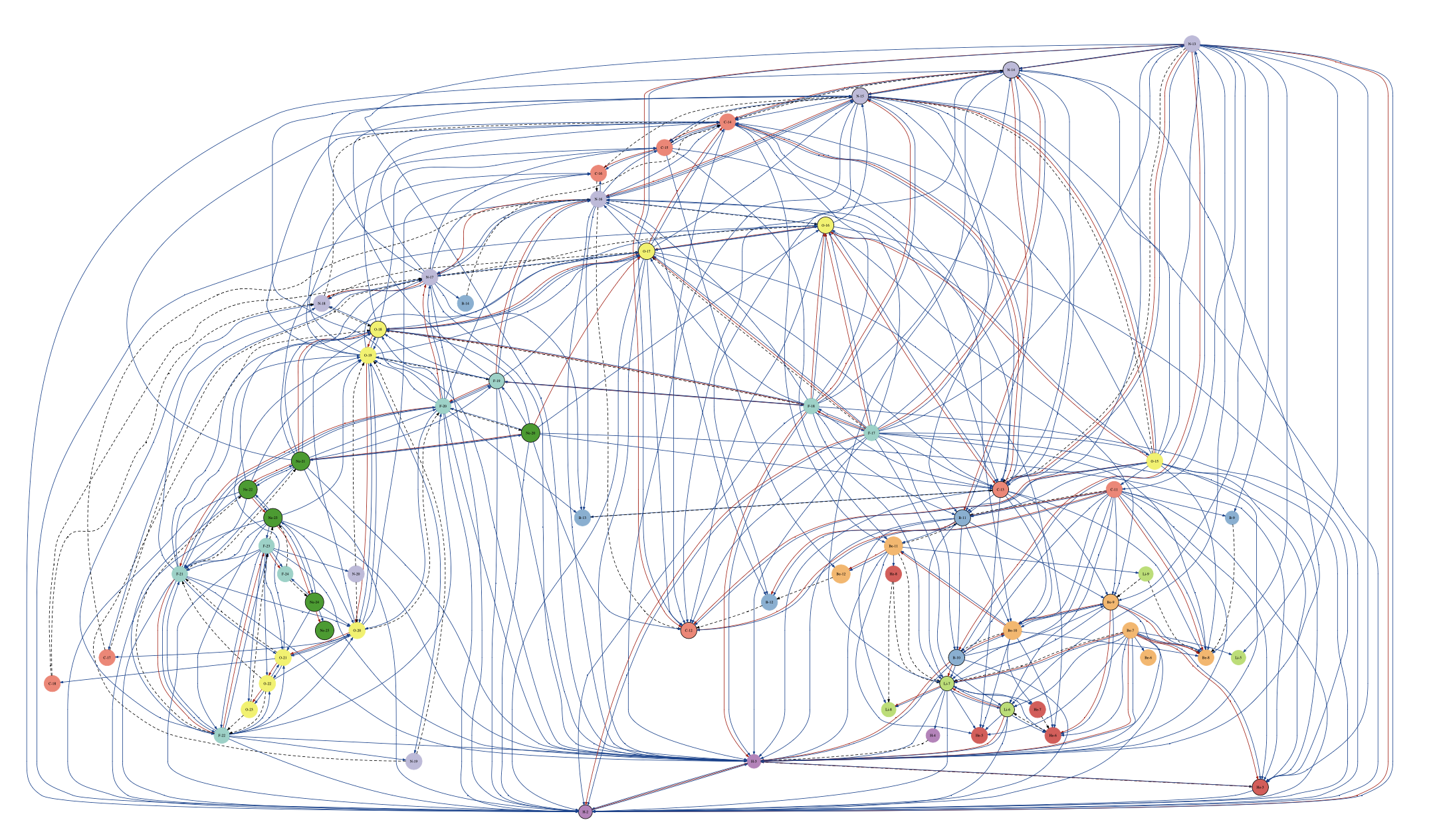
Atom Population Simulation
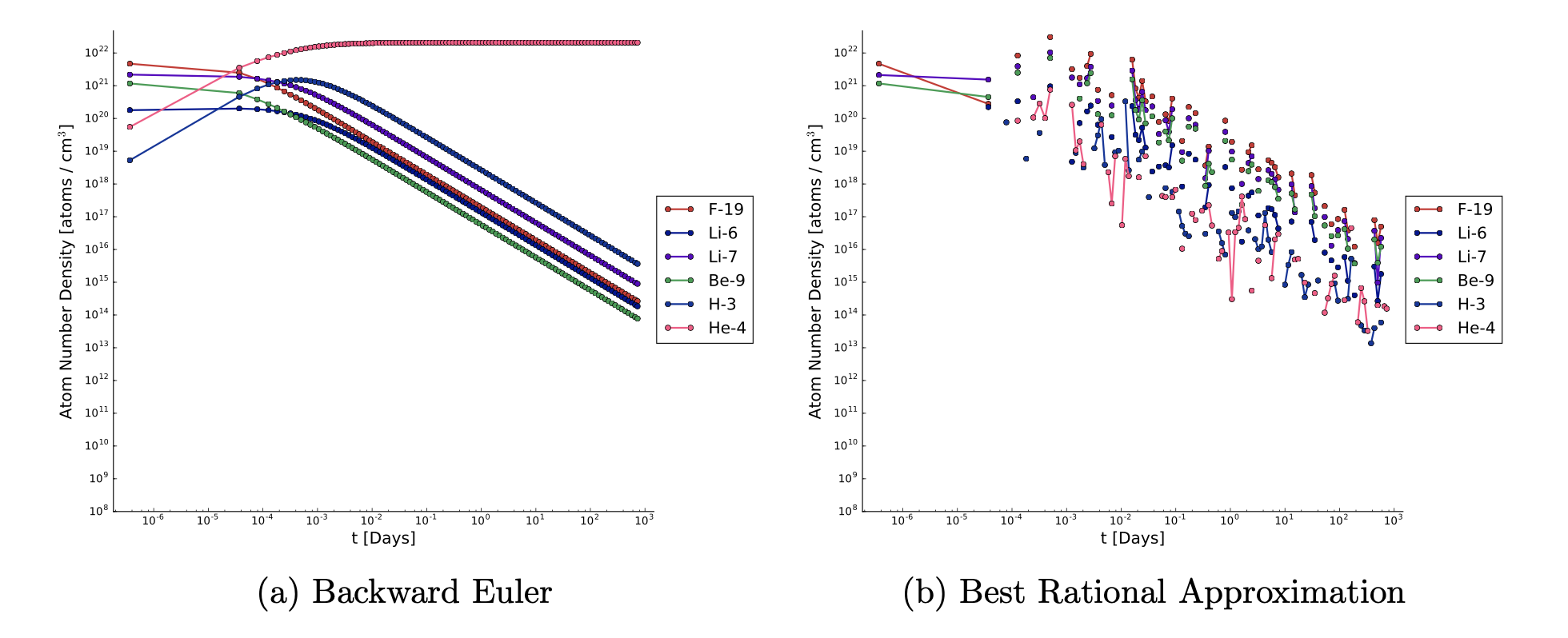
Activity Density Plots
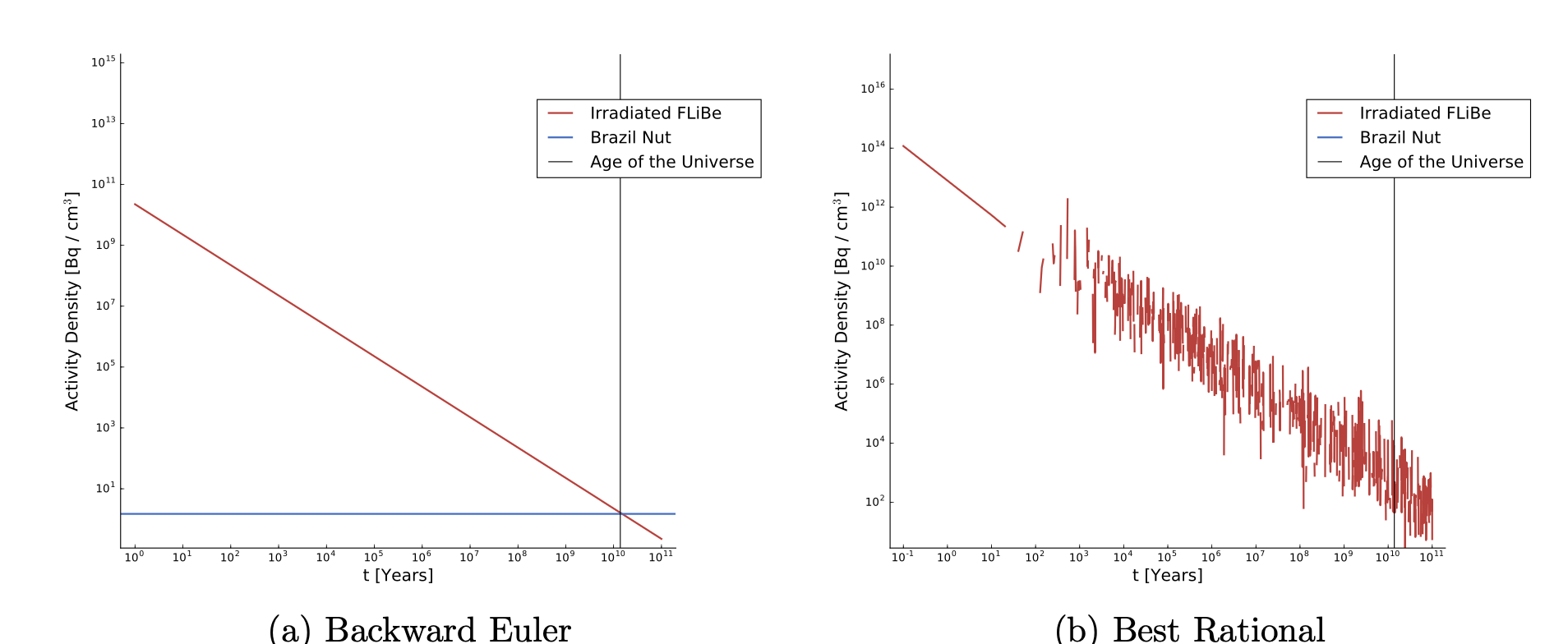
A taste of the technical challenges
Part 2
Multiphysics Modeling
Applied AI
Machine and Deep Learning
Uncertainty Quantification
HPC
Survey from 1,000 feet
- Lots of money being poured into these projects.
- Less regulation than the fission side of the industry.
- Starting to demonstrate some results, but commercialization is still a ways off.
- Aneutronic fusion could be "clean" in most senses of the word, but harder to achieve.
- Neutronic fusion would be easier to achieve, but not "clean" in terms of radioactive waste.
- Whatever ends up being built, it's likely that the capacity could be scaled to match the local demand.
- Doesn't limiting physics of fusion reactors to be baseload power.
- Challenging to accurately predict timelines without more substantial demonstrations.
Example of a tokamak design
MIT Plasma Science and Fusion
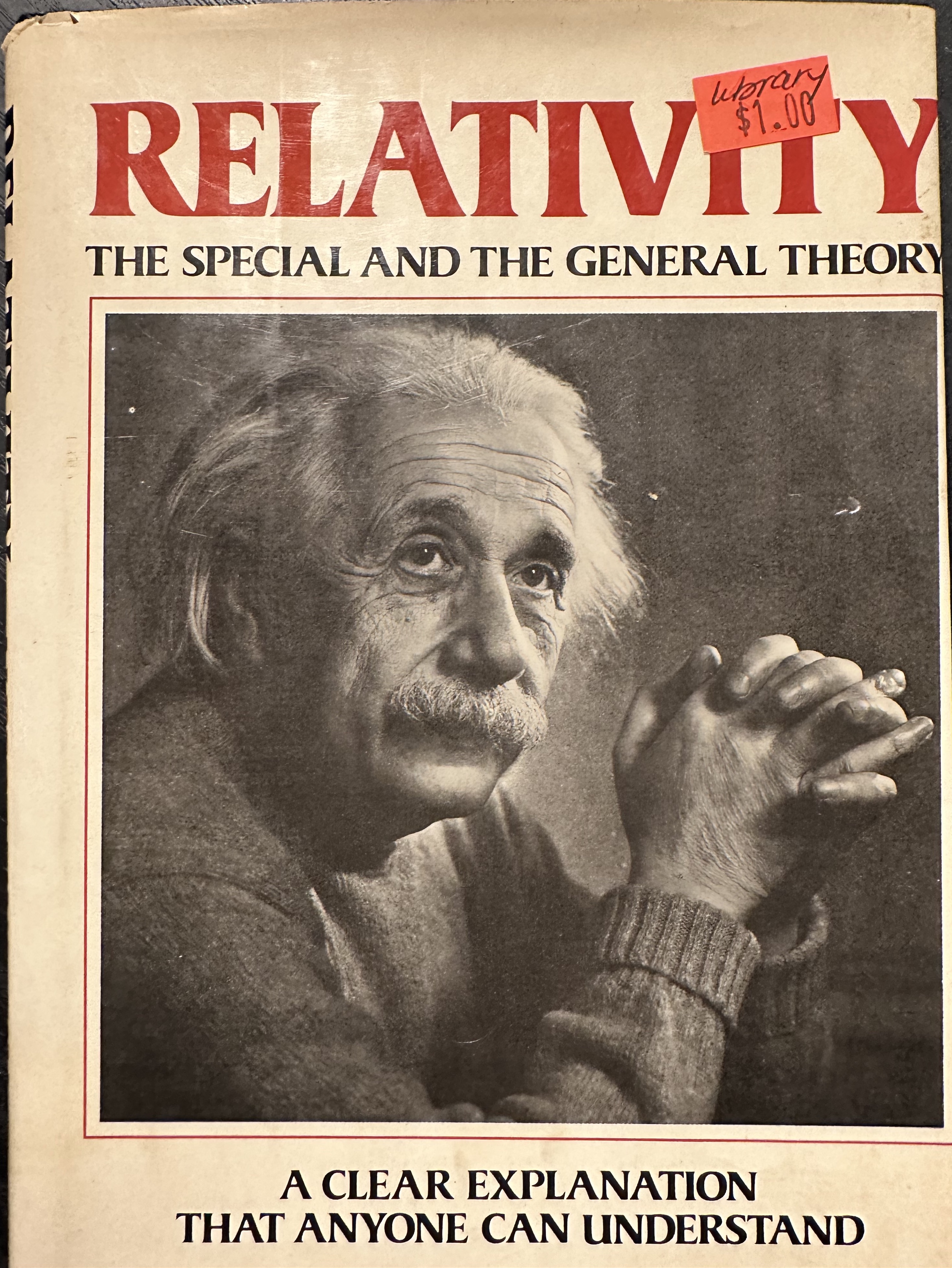
Resources
- Nuclear Engineering Fundamentals
- Nuclear Concepts for Engineers by Mayo (2001)
- Nuclear Energy An Introduction to the Concepts, Systems, And Applications of Nuclear Processes by Murray (2009)
- Historical Inspiration
- The Los Alamos Primer by Serber (1992)
- Radiation Shielding
- Atoms, Radiation, and Radiation Protection by Turner (2007)
- Radiation Shielding by Shultis & Faw (2000)
- Work In Progress